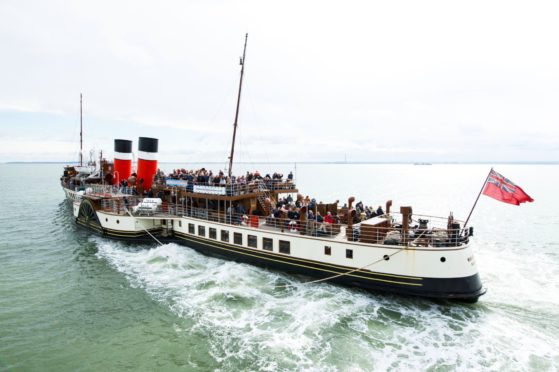
She is the last operational Clyde steamer, the last sea-going paddle-steamer in the world, the ship famously sold for £1 and a cherished Scottish institution buoyed through the decades by a kindly press and a reputation for being deliciously accident-prone.
As she nears her 75th birthday – the paddler was launched on October 2, 1946 – the PS Waverley is an improbable survivor.
Sixty years ago, when there was still an impressive fleet of Clyde pleasure-steamers, few rated what was then quite a down-at-heel ship, rumoured to have been built – badly – from post-war scrap. She was neither as spacious as her big sister, the 1931 Jeanie Deans, nor as sturdy as the 1934 paddler Caledonia, nor as fast as turbine-steamers like the much-lamented Duchess of Hamilton.
Most of the piers on the route for which she was built – the popular Three Lochs Tour – have long since disintegrated and when, in 1975, a bunch of enthusiasts brought the Waverley back from the dead, they met sneering from others who, really, should have known better.
But they hung in there and, but for their endeavours, by 1981 there would have been no cruising left on the Clyde.
Her story really begins, though, not amidst the hammers of the A&J Inglis yard – by the mouth of the Kelvin – but the death-throes of another Waverley, at Dunkirk, in May 1940. Built in 1899 and long a favourite with the public, this speedy single-funnelled paddler was called up for mine-laying duty in both world wars and met her end – with the loss of some 300 lives – at the spite of the Luftwaffe. Her master, Captain John Cameron, was among the few survivors and would command both ships – with a poignant swansong in 1980.
Admiralty compensation to the London and North-Eastern Railway (LNER) for the elder vessel’s fate was scant and, indeed, only accounted for a quarter of the £105, 850 build price for her namesake.
But the grant was conditional on her availability for war service and they insisted on particularly strong framing around the engine-room – a measure that, in 1977, probably saved the paddler’s life.
The LNER Clyde fleet was based at Craigendoran, at the eastern end of Helensburgh, and, given the relatively shallow local waters, was exclusively made up of paddle-steamers.
The new Waverley would indeed be the last steamship ever built for Clyde service – a coal-burner, too, though later converted to oil – and, with her scumbled saloons, creamy upper hull and red, white and black funnels, cut a pretty figure when she took up service on June 16, 1947.
The Three Lochs Tour saw the Waverley sailing from Craigendoran to Dunoon and then up Loch Long, calling at Lochgoilhead before berthing at Arrochar. By coach or on foot, passengers then made the short journey to Tarbet on Loch Lomond, where another paddle-steamer bore them by the bonnie, bonnie banks to Balloch and a train home.
Sadly, the Waverley would enjoy only one season in her full finery for, in 1948, the railways were nationalised by Clement Attlee’s Labour government and the new British Transport Commission painted all the Clyde steamers in a dull scheme with drear buff funnels.
And by the time the operation ended up, in 1973, under Caledonian MacBrayne, there were just two Clyde steamers left.
The Caledonia, the Duchess of Hamilton and the rest had gone because the market had collapsed. As late as 1955 there was a vast appetite for Clyde cruising and the mass of Glaswegians still enjoyed holidaying on the Firth. Many, too, made the morning commute to Glasgow by way of steamers to Wemyss Bay, Gourock and Craigendoran. But, even by 1955, the first car ferries were now in operation – utilitarian motor vessels – and, within the next decade, Scots vacationing habits were transformed.
Pleasure-steamers were not cheap to operate. They had to be fast – passengers liked to cover much ground in a day – so burned much fuel. And, as most were too lightly built for winter service (though the Waverley did once sail Santa up the Clyde in a stunt sponsored by a department store), they were laid up from September to Easter rather than earning their keep.
Demand for the Three Lochs Tour rapidly dwindled and the closure of piers at Lochgoilhead, Craigendoran and Arrochar would see the last excursion in 1972. Waverley became a jobbing vessel, never closely identified with this run or that, lacking the following of her big sisters and, by the 1960s, so ill-maintained that grass sprouted on her paddle-boxes. But she had two virtues. The Waverley was the fastest paddler on the Firth – achieving 18.37 knots on trial – and she was young, the chief reason why she outlasted well-loved but fast-depreciating ships.
The new Caledonian MacBrayne livery – red and black funnels, with little red lions on yellow discs – suited her, too. But more and more whispered her days were numbered. In 1972, passengers on the Waverley and the Queen Mary II had tumbled by 20% – a high embarrassment when CalMac was expected to invest in more and better car ferries.
About November 1973 Douglas McGowan, a chocolate salesman and a Waverley enthusiast, went to visit her in Greenock lay-up and was alarmed to find her both silent and scruffy, with no sign of any off-season maintenance. Then he got word that CalMac chief executive, John Whittle wanted to see him.
McGowan had watched helplessly as a 1965 London endeavour to keep the Jeanie Deans in operation had foundered; been involved, with others, in a vain 1969 bid for the Caledonia. But mistakes in both endeavours proved vital school days when, out of the blue, Whittle cheerfully offered him – or, more precisely, the Paddle Steamer Preservation Society – a present of the Waverley. Whittle assumed they would turn her into a static floating restaurant, but kept a straight face when McGowan, Terry Sylvester, Joe McKendrick and the rest instead enthused about keeping her in active service. Such naivete…but, still, in the terms of agreement, they were forbidden either to compete on CalMac routes or sell the ship to a third party.
Yet the new Waverley Steam Navigation Co Ltd had much to learn and a lot to do and, in 1974 and for the first time since 1812, there was no beat of paddles on the Clyde. The ship was formally handed over on August 8 – Sir Patrick Thomas, chairman of the Scottish Transport Group, donated the £1 note – and then the hard work began of cleaning up the Waverley and her thorough overhaul.
In their flared slacks and kipper ties, no one could have accused her new masters of being cool, but their enthusiasm was infectious and their flair for publicity considerable. Many businesses gave their services free or at cost. Donations flooded in even as, for instance, 20 sackfuls of soot were scraped from her boiler.
To their delight, on dry dock survey the paddler was found to be in far stronger physical shape than had long been whispered. And, on May 10, 1975, in her original funnel-colours, the Waverley embarked on a new career. She was based at Ayr for the first half of the week and at Glasgow for the rest. “Doon the watter” cruises had been abandoned in 1969 and, to CalMac discomfiture, now proved a huge hit. And, save for 2019 – when she needed a considerable re-fit – she has sailed every summer since.
Not all rejoiced. Some thought her a threat to CalMac’s last turbine-steamer. Indeed, the Queen Mary – she had shed the Roman numerals on the demise of the Cunarder – was withdrawn two years later. (She was brought home to Glasgow in 2016 and now undergoes handsome restoration.)
Few seasons have passed without a scrape – last September, the Waverley ran into Brodick pier – but her gravest mishap was in July 1977, when she grounded on the Gantocks reef, off Dunoon pier, and in a falling tide. But for those Admiralty demands in 1946, she would almost certainly have broken her back, and could only resume service in 1978 when anonymous admirers paid substantial guarantee.
The Clyde timetable has changed little since 1975 – though the loss of piers at, for instance, Helensburgh and Millport is regretted – but is really only profitable during the school holidays.
So, since 1977, the Waverley has paid annual visits to the Thames and the Bristol Channel – winning the devotion of that famous pair Timothy West and Prunella Scales. In the 1980s she sailed on several occasions in the Firth of Forth and even cruised down the Outer Hebrides. She has even circumnavigated Britain – but perhaps her most emotive visit was to Dunkirk, in May 1980, when Captain Cameron laid a wreath over her predecessor’s watery grave. The Waverley would not be allowed to sail so far now, though. But for Covid, she would begin this season as usual with some West Highland cruising, from Oban and Portree.
Costs are an abiding worry and the market for Clyde cruising still declines. But, over successive winters two decades ago, she was rebuilt and reboilered with a £5.5 million grant from the Heritage Lottery Fund, and, last year, was reboilered for the fourth time.
The Waverley has never looked as good as she does now and, thanks to clever tricks with Bakelite and linoleum, preserves an authentic 1940s atmosphere combined with all modern safety features. Yet the wolf is never far from the door.
“The ship is now in the hands of people who understand that the nature of the business has changed,” muses author Andrew Clerk. “Today there are far more advance bookings, principally through the internet. Waverley has to compete in a leisure market more crowded – and more sophisticated – than it was a decade ago.
“The regulative environment has become more restricted, throwing up all sorts of hurdles. Fuel prices have risen much faster than ticket prices. It has reached the stage where, unless she earns £12,000 each day she goes out (enough to cover running costs, with some extra for winter overhaul), she loses money. The public at large do not owe her a living, and may not bail her out again to the extent they did in 1974.”
Nevertheless she washes on, not as an inert museum piece, but as a living princess of the sea.
You can watch those majestic, surging engines; savour the rich scent of steam and hot oil. Enjoy that bacon roll as she passes Erskine and into the true sea; lean on her rail and hear the hypnotic eight-beats-to-the-bar of her paddles…
And, as long as she endures, there shall be summer on the Clyde.

Enjoy the convenience of having The Sunday Post delivered as a digital ePaper straight to your smartphone, tablet or computer.
Subscribe for only £5.49 a month and enjoy all the benefits of the printed paper as a digital replica.
Subscribe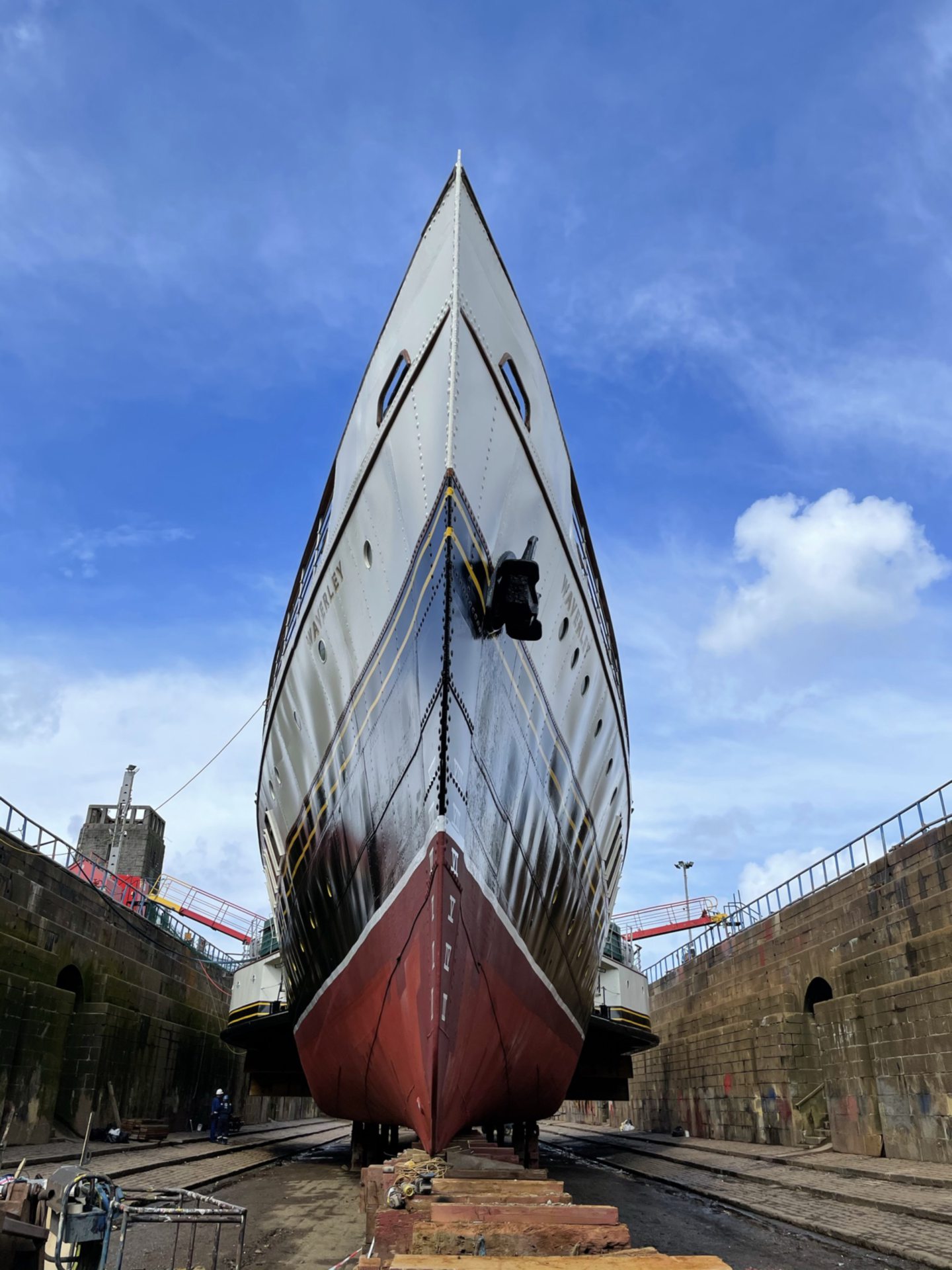 © SNS
© SNS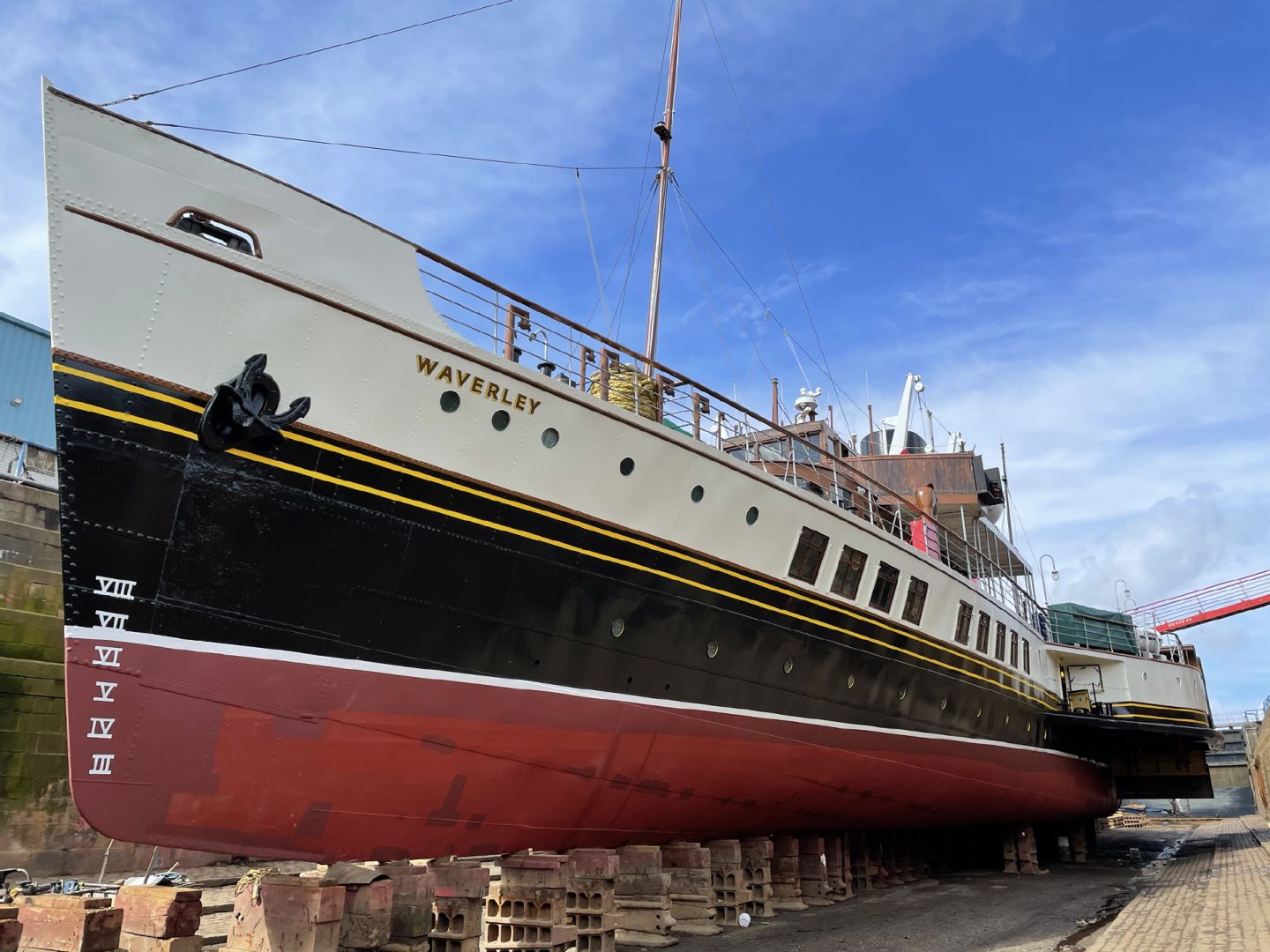 © Supplied
© Supplied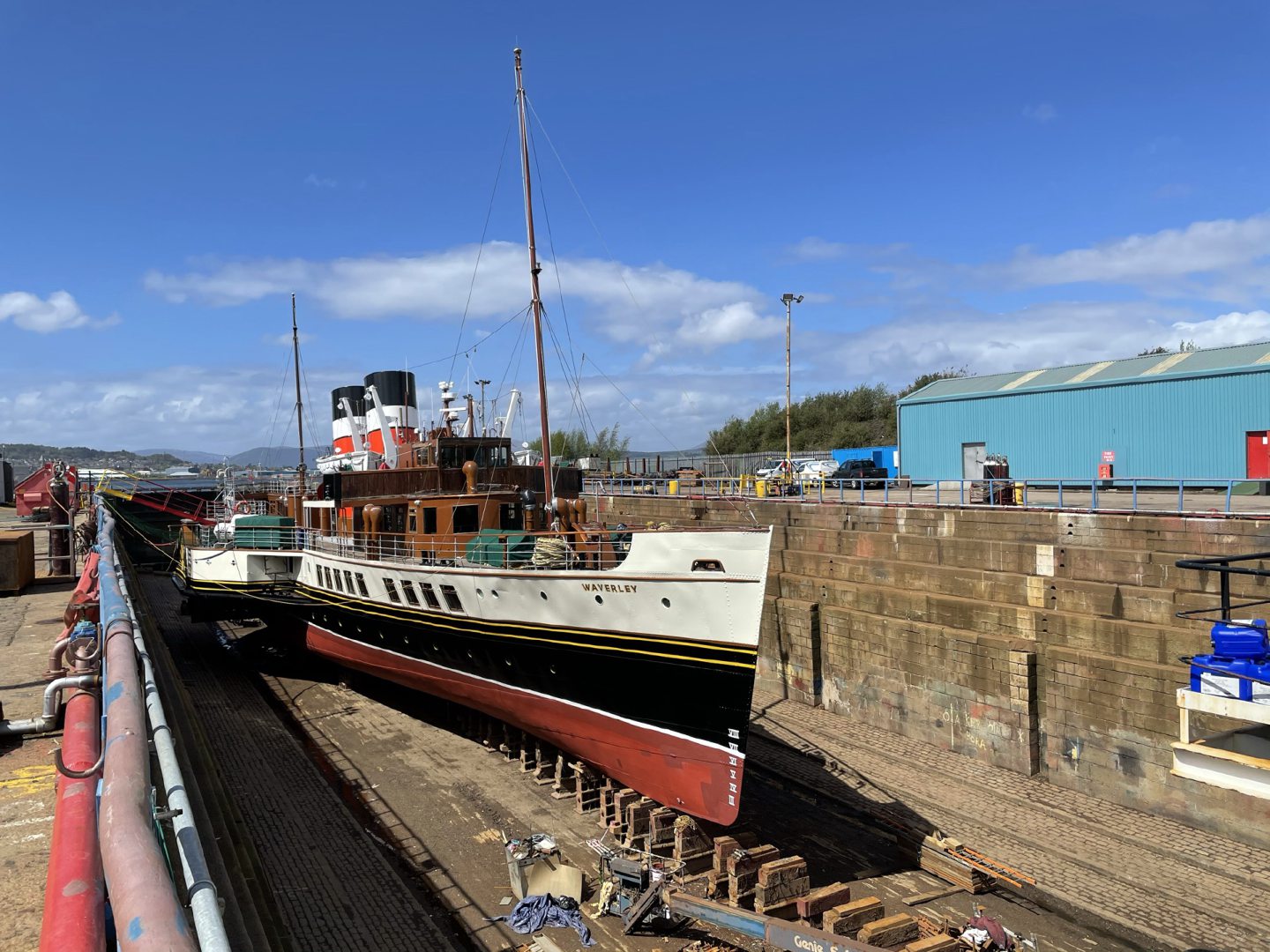 © Supplied
© Supplied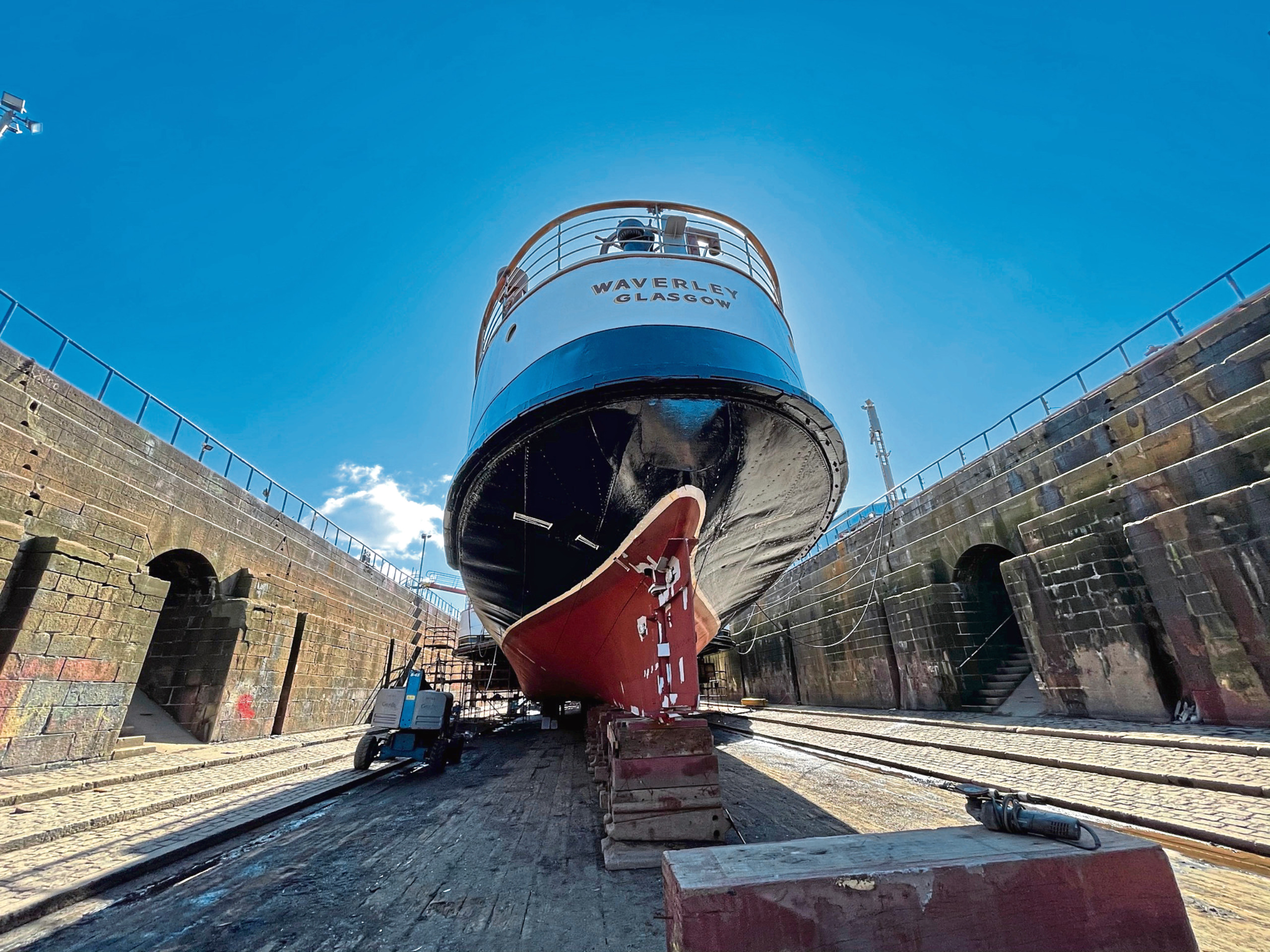 © SYSTEM
© SYSTEM